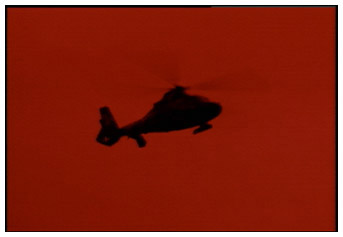


 |


Zhao Liang belongs to a generation of artists who are attempting to create an aesthetic that takes into account the methods of documentary filmmaking and the language of popular culture. On the one hand, he borrows the strict logic of straight documentary and its value in terms of providing historical, social, and political testimony. On the other hand, he borrows an aesthetic from the field of video games, B-movies, and music videos. He merges a language of the political avant-garde with one belonging to commercially driven entertainment, with a flavor of Western, if not American, hegemony. Zhao draws on not only two aesthetics but two cultures, two political identities on the verge of change.
His work could be seen as a comment on cultural invasion. What is at stake in Zhao's method is the search for a shared language--a language capable of reaching an audience that is familiar with only one or the other category of experience. His works could be labeled quasi-documentary, as they question the documentary format by diluting it with images from more popular media. He consciously authors his videos' "image dumps" to signify a moment in our visual culture when an endless profusion of images is canceling out content and meaning. In the meantime, he identifies his own practice as a reconfiguration of the codes of representation that these media are making available.
Informed by these influences, his film work provides a critical, cruel, and ironic record of Beijing's urban shifts. In Bored Youth (2000), using the format of music videos, Zhao films an actor running through the remnants of a traditional Beijing neighborhood that is in the process of being destroyed as a result of urban economic redevelopment. In Jerks, Don't Say "Fuck" (2001), he uses archival images, among other found footage, to develop a relentlessly rhythmic antitotalitarian visual pamphlet. Wait (2000) records in a straight and static way the strange social no-man's-land and no-man's-time that characterize the act of waiting for public transportation.
Zhao's work has been shown both in museum exhibitions and at film festivals, including China Contemporary Art Exhibition: Red Continent, Gwangju, South Korea (2002), and ARS O1, Kiasma Museum of Contemporary Art, Helsinki, Finland (2001); the Eighth New York Underground Film Festival, New York, New York (2001); Fictions du Réel, Marseilles International Documentary Festival, France (2001); and the Microwave Festival, Hong Kong (2000).
--Philippe Vergne











